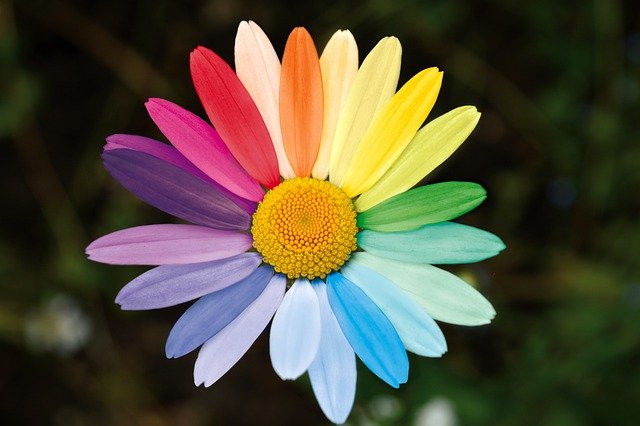Vedic philosophy developed and flourished in the Bronze Age about 5000 years ago. It originated in the Sindhu Valley, now a part of Pakistan, as a pantheistic set of beliefs celebrating nature. This philosophy is today called the Hindu religion. The word Hindu is of foreign origin, from Persia. This word was corrupted from the word Sindhu that referred to the people who lived along the waters of five rivers that flowed from the Himalayas to the Arabian Sea. Sindhu in Sanskrit, the language spoken by those who built this riverine civilization means water in all forms, especially rivers and seas. It’s ironic that Hinduism is touted as the Vedic religion. Shouldn’t we reclaim its authenticity and call it Sindhuism?

Creator is full by itself, Creation too is full
From the infinite Creator arises the Creation in full
When the mortal Creation parts from the divine Creator
Creator and Creation still remain full
May peace rule the energy consciousness of Creation and Creator!
(Paraphrased) Isa Vasya Upanishad, circa 2500 BCE, end-Vedic
This Vedic verse from one of the oldest scriptures in the world is an invocation to the Creator, Creation, and its Creatures. It is generally placed at the beginning of Vedic scriptures invoking peace and harmony. It talks about the infinite fullness of the Creator, the process of Creation, and the products of Creation. Quantum science looks at the Universe and its creation before and beyond the Big Bang. What existed before the Big Bang? The jury of science is still in debate.
Veda (meaning body of knowledge, both singular and plural) talks of the Universe as something that always existed and will continue to exist, always in expansion, and infinite. Veda talks of the infinite fullness of the Created, something no other religion talks about. Most organized religions speak of the Created, the Creatures, as inferior, often defiled beings born and raised in sin, who need to pray to the superior God of Creation to redeem themselves. Not so in the Vedic philosophy.

The Vedic understanding is far more rational than the myths of religions that believed in an all-powerful God creating the earth in 6 days, resting on the seventh, after He created the first man, and then a woman out of his rib, with a snake thrown in as a spanner in the works. The Vedic religion was not built on myths and fables. It believed that the Universe always existed, constantly expanding, which is that science tells us now. The Vedic religion was not misogynist. The Vedic Creator was androgynous as we shall see in a moment.
The Vedic seers looked at themselves as holograms of the Creator, infinite, perfect, and full, as their Creator is. They believed that anything that came out of an infinite perfection of fullness would also be infinite, perfect, and full. This belief requires self-awareness. In its absence imperfection reigns. The Rishi, the Vedic Seers, were prophets. The word Rishi means those who see, move and flow with the truth of creation. They perhaps saw the Word, heard the Sound, and realized the experience of Prophets of other religions who followed millennia later. Their wisdom was expressed as sruti, referring to the truth of creation that was heard and sensed.
From the experienced reality of the Rishi, expressed as the Veda, arose the concept enunciated in the Isa Vasya Upanishad that all that is Creation and Created is energy, one energy. Whatever one sees as mind and body matter is a reflection of that energy. That energy is one and all its creations are one and equal, with no differentiation of color, creed, culture, race, religion, gender, age and status. This fact that all matter is energy took another 5000 years for science to understand. The truth that all creation is equal is still not understood by a majority of humanity.

The Nasadiya Sukta verses of the Rig Veda, the oldest of the Vedic scriptures, pokes fun at the Creator, perhaps in anticipation of the imperfection of the perfect beings it sought to create.
Who really knows, and who can swear,
How creation came, when or where!
Even gods came after creation’s day,
Who really knows, who can truly say
When and how did creation start?
Did the Creator do it? Or did the Creator not?
Only the Creator, up there, knows, maybe;
Or perhaps, not even the Creator.
The truth perhaps is that though the energy of the created creatures is perfect, the mind-body matter it is encased and embodied in is less than perfect leading to all the negative energy we witness and experience.
At its peak and possibly end, Vedic beliefs morphed from a pantheistic structure of multiple elemental energies into a monotheistic belief in a formless source of conscious energy awareness, as the Upanishad, the Vedic epilogues, state. Over time, these beliefs became corrupted into a polytheistic religion that worshipped multiple deities, each cloned out of one’s individual belief system. Sindhuism is still a monotheistic religion that believes in a formless energy of creation. However, as the Rig Veda says, there is one truth, and many ways to perceive that truth.
Within this polytheism practised today, there still remained a firm belief in that one formless source of energy. Human nature, though, craved form over formless; gross over the subtle. Mahadeva, the great god, became the identity of that formless source in the limited imagery of the human, and Isvara, supreme energy consciousness. The Mahadeva I know, and identify with, is androgynous; genderless and formless; it is passive potential energy in meditative stillness; it is also dynamic kinetic energy in active motion; it is human, it is divine; it is individual, it is collective; it is the creator, sustainer and destroying revivifier; it is purusha, the source; it is prakriti, the creation; it is Shiva, auspicious stillness; it is Shakti, generative action; it is Shiva-Shakti, the ultimate energy consciousness of the creator and the creation.

This is the Vedic philosophy I know and believe in, that I am proud of. This is Humanism, insaniyat in Urdu and manusyat in Sanskrit, the foundation of the eternal philosophy of sanatana dharma, the Vedic Sindhu religion. I am proud to be that Human. I do not wish to be a Hindu, a Muslim, a Christian, or any of these divisive labels that divide and destroy; and do not create. I wish to be that Shiva-Shakti, merely human, yet with the faith I can be divine the way my religion and philosophy once believed in and practiced. I wish to be infinite in the energy of conscious awareness, in the absence of a biased mind and weak body; the infinity beneath the zero in the symbol we started this chapter with.
Tagore wanted my country to awake into that freedom of mind without fear. Gandhi wanted the belief of the minority of one to be equal to the opinions of billions in my land. Bharati sang in my language exhorting me to be fearless even if I lose everything for my belief. Lennon wanted my world to be without boundaries and religions. King dreamt for me to empower the disempowered. Their vision and dreams remain unfulfilled. My land and my world are disintegrated, entropic, intolerant, without harmony, and selfish, unfit to pass on as legacy to the unborn. This is my collective conscious vision. Join me in this vision if you believe in humanity.
Quo Vadis Humanness?
—
Note: If you wish to read more of Ram’s commentaries on the Vedic scriptures, soon to be published, watch this space…



